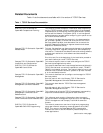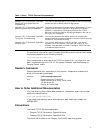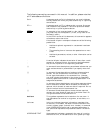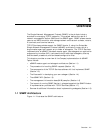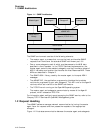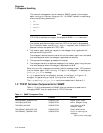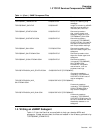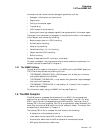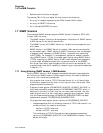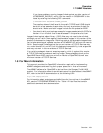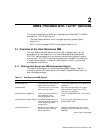
Overview
1.2 Request Handling
The network management station sends an SNMP request to the master
agent running on the host, using port 161. An SNMP request is made using
one of the following commands:
•
Get
•
GetNext
•
GetBulk
•
Set
Note
TCP/IP Services does not support the standard SNMP
Inform
command.
The request specifies the object identifer (OID) of the data to be accessed.
For information about formatting
get
and
set
requests, refer to Section 5.2.
Request formats are specified in RFC 1905.
2. The master agent sends the request to the subagent that registered the
subtree containing the OID.
The subagent receives communications from the master agent over the socket
that was assigned when the subagent registered the subtree.
3. The appropriate subagent processes the request.
4. The subagent sends the response message to the master agent using the port
that was assigned when the subagent registered the MIB.
When they are idle, subagents periodically send a message to port 705 to ensure
that the master agent is still running. In Figure 1–2, subagent 1 is sending the
esnmp_are_you_there
message.
A
trap
is generated by the subagent and sent to the client. In Figure 1–2,
subagent n is generating a trap for the trap client on NMS 2.
The
trap
and
esnmp_are_you_there
routines are described in Section 5.1.
1.3 TCP/IP Services Components for SNMP
Table 1–1 lists the components of SNMP and the command procedures for
managing SNMP that are supplied with TCP/IP Services.
Table 1–1 SNMP Component Files
File Location Function
TCPIP$ESNMP_SERVER.EXE SYS$SYSTEM Master agent image.
TCPIP$OS_MIBS.EXE SYS$SYSTEM MIB II subagent image.
TCPIP$HR_MIB.EXE SYS$SYSTEM Host Resources MIB
subagent image.
TCPIP$SNMP_REQUEST.EXE SYS$SYSTEM Simple MIB browser.
TCPIP$SNMP_TRAPSND.EXE SYS$SYSTEM Utility for sending trap
messages.
(continued on next page)
1–4 Overview



